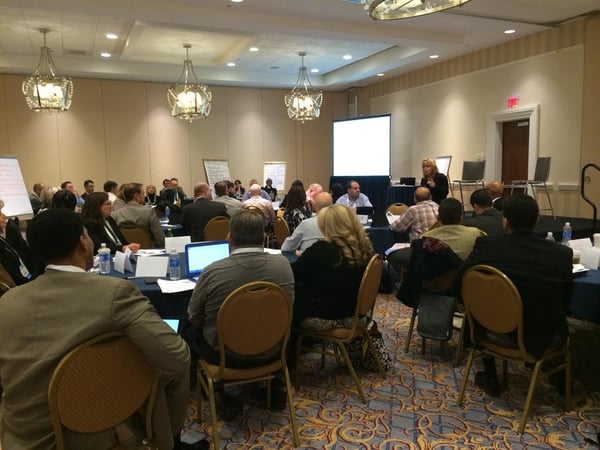Editor's note: This post was written in advance of #tech15 and is archived here.

It’s a good time to review why the conference’s 4 educational pathways are appropriate themes for the association community to discuss.
Leadership and Strategy
Here’s the Leadership and Strategy pathway description from the conference website:
Specifically designed for the c-suite executive, this pathway will focus on high level learning such as how to build a top-notch staff, talent management, c-suite communication, trends, etc.
The 4 pathways reflect the shift made by IT departments in the last several years as well as new issues they must address. In the past, IT was a service department that answered the calls of staff when a new report or printer repair was needed. IT’s place in the org chart, as part of overhead, was often underneath Finance or Administration.
Now, IT is a business unit whose leader is most likely to report directly to the CEO. IT employees are in-house technology advisors who help other departments address challenges and accomplish goals. They understand their organization’s membership value proposition and help their colleagues use technology to deliver, enhance, and measure that value proposition.
In the past, IT might get a copy of the board-approved strategic plan and learn how they were expected to support it. Now, they’re involved in influencing strategy, developing the plan, and offering ideas on how technology can further their association’s strategic objectives.
If your organization lacks the resources to hire a full-time IT professional for this critical role, don’t despair. Many of us in the association community provide that type of consulting, and a handful of us provide virtual CIO services as well. Even the smallest staff association can benefit from having IT Leadership and Strategy talent on its team.
The Business of IT
Topics can address risk management, security, privacy, intellectual properties, security for members, litigations, and ‘things your board needs to know.’
IT leaders have a more strategic focus nowadays, but they still must dedicate time to managing staff, deploying projects, and “putting out fires.” They must also deal with the repercussions and liabilities that are inherent in using technology.
In this pathway, ASAE has identified several challenges that associations must address to prevent worst case scenarios. These issues often slip off the radar and don’t make it into leadership conversations as they should.
Kudos to ASAE’s Technology Council for raising the visibility of these issues and starting a conversation at Tech 15 that you can take back to your office. You will find vendors on Tech 15’s Expo floor that provide services, such as security assessment or digital asset management, that can help you minimize the risk these new threats present.
The New IT
How does IT get deployed in an organization? What does the Co-IT look like? What is the face of leadership in the new IT? What is trending in digital ecosystems?
Associations are investing an increasing proportion of their budget in technology solutions and, understandably, have high expectations for that investment. To deploy these solutions successfully, you must have people on the project team with the appropriate, specialized skills: business analysis, system analysis, and project management. Yet, too often, organizations expect staff to develop requirements, select systems, and manage the entire project without the benefit of these skills.
Because everyone is used to figuring out how to use new apps in their personal lives, many organizations fail to provide the necessary training for IT and non-IT staff to effectively use the technology at work. For example, staff usually receives training on a new system prior to implementation, but too often that’s where training ends. Additional training isn’t included in future budgets so staff never learns how to take full advantage of the technology.
Marketing and communication (MarComm) professionals find themselves in constant catch-up mode, as new social, mobile, and web tools come onto the market. Do they understand the capabilities of MarComm technology so they can decide which type of system will help them accomplish their goals?
MarComm and Technology
How do marketing, communications and technology blend to develop and distribute a true digital experience? What factors contribute to a successful collaboration?
MarComm is quickly becoming the department most reliant on technology to do its job. Email marketing, social media, marketing automation, content management, and web analytics are just some of the tools used by MarComm association professionals every day.
The IT and MarComm departments are business partners – and that’s why association MarComm professionals should participate in this conference and the high-level conversations that will take place at it.
IT staff must understand the technology needed by MarComm staff now and in the future. For example, IT staff should become familiar with inbound marketing tools: how these tools can help their association achieve its goals and which tools will integrate best with their organization’s existing systems. As for MarComm staff, they must understand the security and privacy issues that surround the use of SaaS products and mobile devices, and be a true partner with IT in minimizing those risks.
Contribute to the conversation
The ASAE Technology Conference provides the opportunity for the executive, IT, and MarComm departments to have strategic conversations about the role of technology in fulfilling their association’s mission.
Photo: @TechConf
Editor’s note: The author is a former chair of the ASAE Technology Council.
